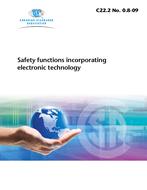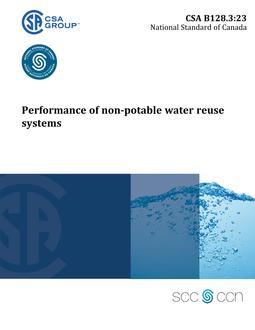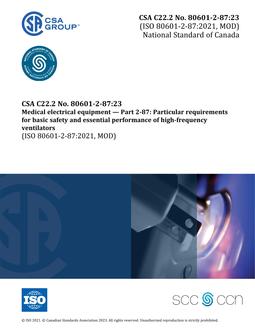
CSA C22.2 NO. 0.8-09
Click here to purchase
Preface
This is the second edition of CSA C22.2 No. 0.8, Safety functions incorporating electronic technology, one of a series of Standards issued by the Canadian Standards Association under Part II of the Canadian Electrical Code. It supersedes the previous edition published in 1986.
Scope
1.1
This Standard applies to products and component devices where the electronics technology handles the operational logic including the safety features. This Standard applies to the following configurations:
(a) safety control function(s) implemented in hardware only; and
(b) safety control function(s) implemented in some combinations of hardware and software.
1.2
The scope of this Standard includes the sensors and actuators that are associated with the safety control.
1.3
The requirements in this Standard apply to products where failure in either the hardware or software, or any associated devices, can lead to a hazard.
1.4
This Standard prescribes minimum requirements for the documentation necessary to evaluate and confirm that the equipment meets the safety requirements as specified in this Standard.
1.5
This Standard applies to a product identified under a relevant product standard and where the purpose of the product, along with its features and operational role, can be described.
Note: An understanding of the specific end-use environment and any risks associated with the product are essential for thisStandard to apply.
1.6
This Standard does not cover general-purpose applications or products where the end-application or the safety requirements for the product are not known or cannot be described, such as for a general-purpose Programmable Logic Controller (PLC).
1.7
The requirements and applicable conditions stated in the relevant product standard take precedence over the requirements outlined in this Standard.
1.8
In CSA Standards, “shall” is used to express a requirement, i.e., a provision that the user is obliged to satisfy in order to comply with the standard; “should” is used to express a recommendation or that which is advised but not required; and “may” is used to express an option or that which is permissible within the limits of the standard.
Notes accompanying clauses do not include requirements or alternative requirements; the purpose of a note accompanying a clause is to separate from the text explanatory or informative material.
Notes to tables and figures are considered part of the table or figure and may be written as requirements.
Product Details
- Edition:
- 2nd
- Published:
- 10/01/2009
- ISBN(s):
- 9781554913077
- Number of Pages:
- 74
- File Size:
- 1 file , 860 KB
- Product Code(s):
- 2420302, 2420302


